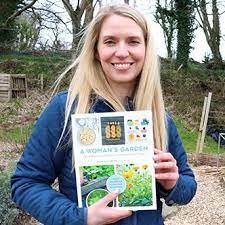Hepatica nobilis, or liverwort, from Gardenia.net
Plant of the Week:
Hepatica nobilis
This week I try to fake you all out by bringing up a plant about which I am sadly ignorant, the Hepatica nobilis. Then I basically bail out of that situations and return to my comfort zone of a plant I know very well, the Helleborus foetidus.
But I would love to know more about this early spring native, and I would love to grow it too. If you have more photos or informations on Hepaticas you grow, I would love to hear from you! LHarris@LHGardens.com— shoot me an email!
Look at the photo— they are so cute! A stark contrast to the plant whose common name is the Stinking Hellebore.
Helleborus foetidus:
In the podcast I said I wouldn’t cut it and bring it into my house, but today I did just that, and really, unless you stick your schnozz right into it, there is no detectable odor.
That’s the good news. The bad news is that like other hellebores are apt to do, my flowers got the droops.
Hellebore flowers tease us at this time of year because there just isn’t much in terms of cut flowers in our gardens. They look so cute and perky out there, but bring them in, including the stinking hellebore, it seems, and they are determined to not take up the water in your vase, and they flop about as if you’ve put them in the Sahara instead of a vessel of water.
My funny Valentine? No, my droopy Stinking Hellebore.
They should do better later in the season— after setting seed, from what I have read. Now, in winter, they may bloom, but they won’t spread their cheer indoors for more than a few hours.
Guest:
Tanya Anderson
Tanya Anderson has written a book that highlights the gardens and crafts of eight women, and I really enjoyed getting to know how the women in A Woman’s Garden: Grow Beautiful Plants and Make Useful Things occupy a space in gardening with which I had been unfamiliar.
Tanya and the other gardeners she features in her book use plants to eat, sure, but also to make skin care products, soap, natural dyes, and beverages. Her specialty is the soap making, and there are 35 projects described in this book to get you crafting with flowers and plants in ways you many not have considered.
Tanya and her book A Woman’s Garden. You can buy it here on my Amazon Storefront.
Tanya’s website, Lovely Greens, her YouTube channel, Instagram feed and Facebook page all supply lots of wonderful information and inspiration too, but A Woman’s Garden pulls so many projects together with beautiful photographs and step by step directions on how to carry out these artistic and rewarding projects.
Tanya’s natually colored soap. She uses herbs, flowers and other natural ingredients. Photo from her website, LovelyGreens.com
The Play List
Boxwood pruning
It’s the perfect time of year to prune, but not shear, boxwoods. Shearing would result in some half-cut leaves that could show you their disgruntlement at winter temperatures by browning. Reaching in to punch holes in your boxwood bushes can reduce the size and give your plant they air circulation and interior growth that makes them healthier.
Reach in to prune a boxwood, creating air and light on the interior of the plant.
You can poke a lot of holes in your Buxus and reduce the size of the plant by choosing the tallest or widest branches.









